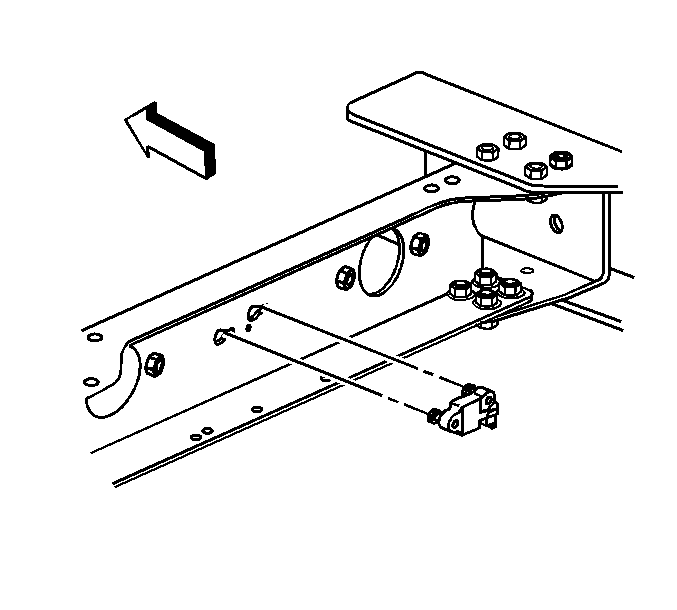Important: Utilize the first fastener repair and the second fastener repair in the event that the sensor mounting holes or fasteners are damaged to the extent that the sensor can no longer be properly mounted.
- Perform the following steps in order to complete the first fastener repair:
| 1.1. | Remove the stripped fastener and discard the nut. |
| 1.2. | Chisel off the damaged weld nut and discard the weld nut. |
| 1.3. | Clean the front end lower tie bar surface where the new weld nut is to be installed. |
| 1.4. | Install new weld nut GM P/N 11514034 into position. |
| 1.5. | Migweld the new weld nut to the front end lower tie bar surface in the correct location. |
Notice: Use the correct fastener in the correct location. Replacement fasteners
must be the correct part number for that application. Fasteners requiring
replacement or fasteners requiring the use of thread locking compound or sealant
are identified in the service procedure. Do not use paints, lubricants, or
corrosion inhibitors on fasteners or fastener joint surfaces unless specified.
These coatings affect fastener torque and joint clamping force and may damage
the fastener. Use the correct tightening sequence and specifications when
installing fasteners in order to avoid damage to parts and systems.
| 1.6. | Install sensor with new fastener GM P/N 11515926. |
Tighten
Tighten the fastener to 10 N·m (89 lb in).
- Perform the following steps in order to complete the second fastener repair:
| 2.1. | Remove the improperly installed rivet. |
| 2.2. | Enlarge the mounting holes in the lower radiator support to 9.0 mm (0.35 in). |
| 2.3. | Insert and properly seat the rivet. |
| 2.4. | Install the sensor with the screw. |
Tighten
Tighten the fasteners to 10 N·m (89 lb in).
- Remove any dirt, grease, or other contaminants from the mounting surface.

- Install the inflatable restraint front end discriminating sensor (3) horizontally to the front end lower tie bar (1).
- Point the arrow on the sensor toward the front of the vehicle.
Notice: Use the correct fastener in the correct location. Replacement fasteners
must be the correct part number for that application. Fasteners requiring
replacement or fasteners requiring the use of thread locking compound or sealant
are identified in the service procedure. Do not use paints, lubricants, or
corrosion inhibitors on fasteners or fastener joint surfaces unless specified.
These coatings affect fastener torque and joint clamping force and may damage
the fastener. Use the correct tightening sequence and specifications when
installing fasteners in order to avoid damage to parts and systems.
- Install the mounting fasteners (4) to the front end discriminating sensor.
Tighten
Tighten the fasteners to 10 N·m (89 lb in).
- Connect the harness connector to the front end discriminating sensor.
- Install the CPA to the harness connector.
- Remove the safety stands and lower the vehicle.
- Enable the SIR system. Refer to
SIR Disabling and Enabling
.


